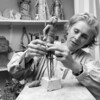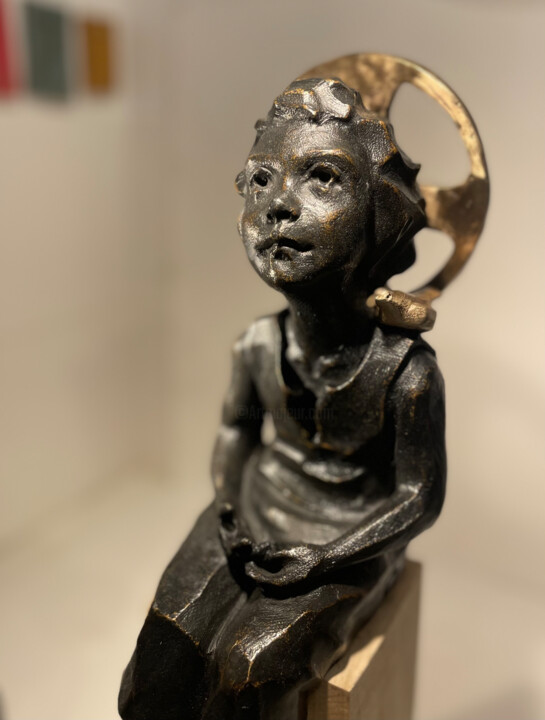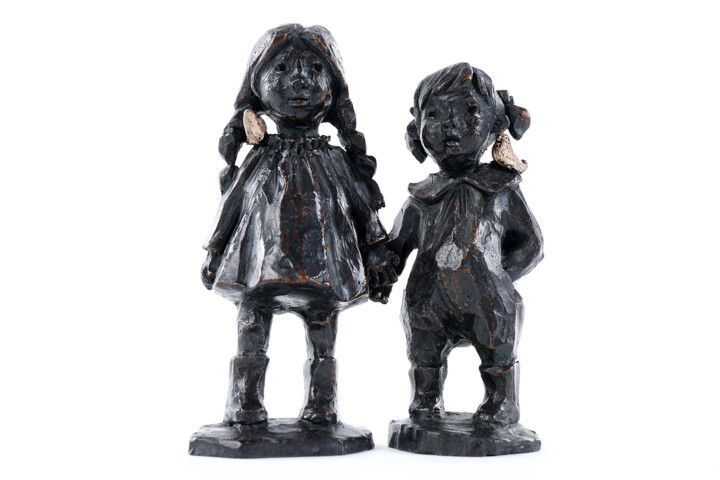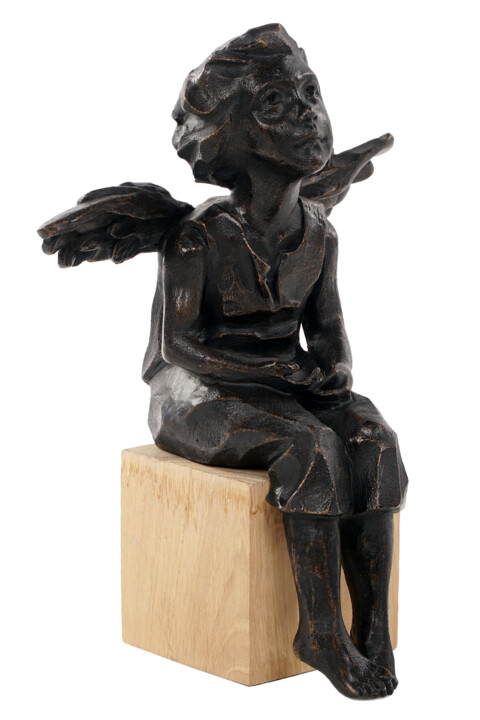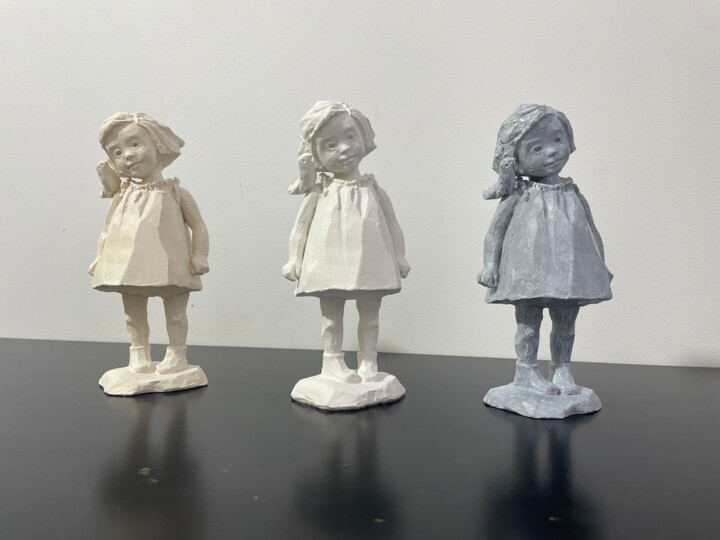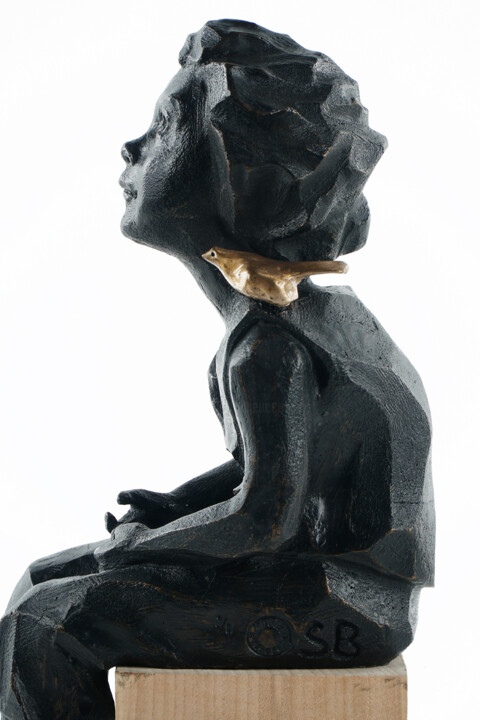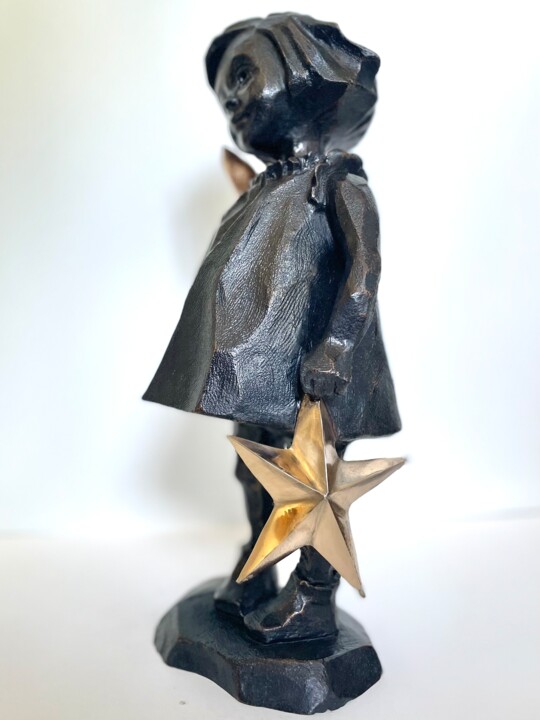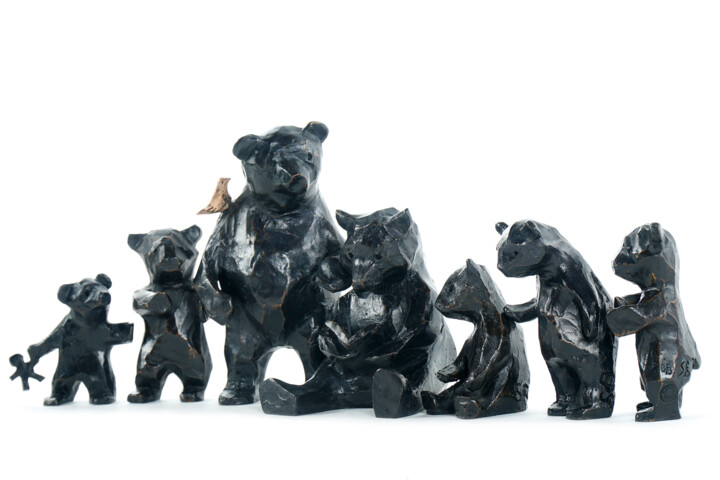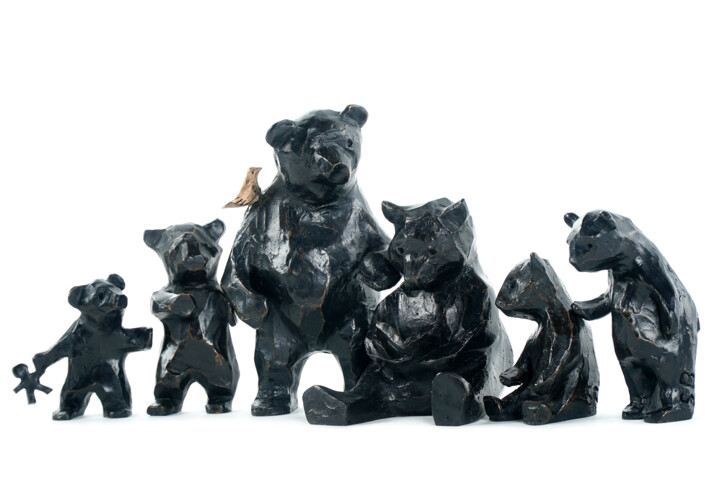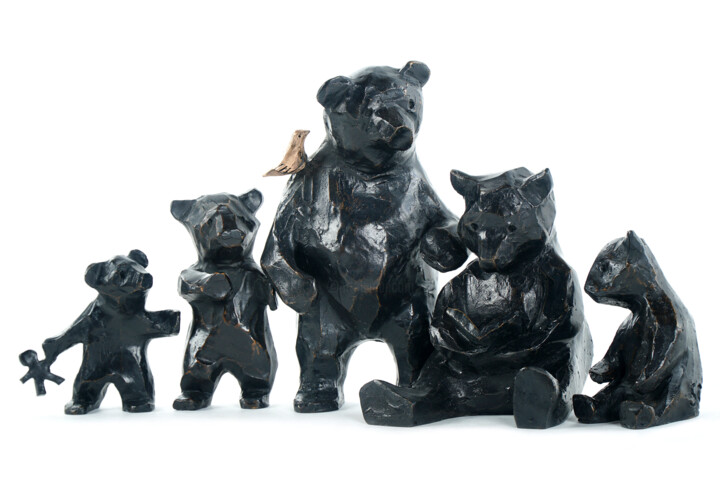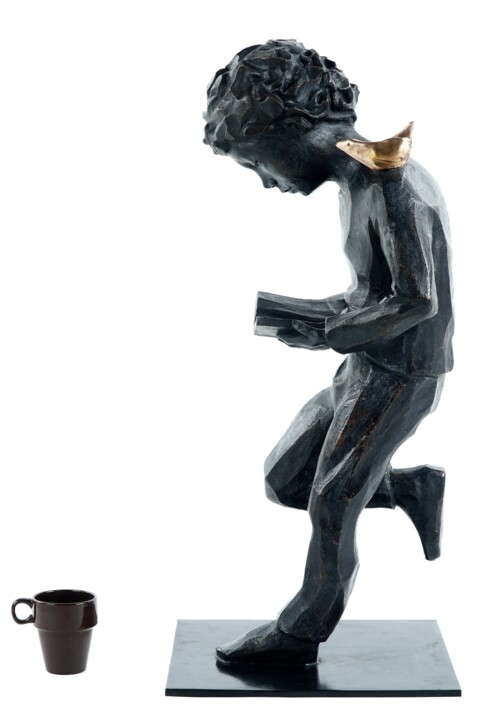What inspired you to create works of art and to become an artist? (events, feelings, experiences...)
I've always loved sculpture, ever since I was little. But as my parents advised me not to make it my job, I studied interior architecture and, with my diploma, I started working in shop fitting. A very good school of life that I don't regret… but that didn't satisfy me!
It was at 40 that I started. I told myself that if I didn't realize my dream now I never would.
I then left interior design to take up sculpture lessons. I then discovered what bronze was with my teacher. He taught me how to make moulds, carving and I learned the patina of bronzes at the foundry.
What is your artistic background, the techniques and subjects you have experimented with so far?
I first made terracotta, I tried ceramics, but I quickly abandoned these techniques to devote myself solely to the production of bronzes. It is their timeless, solid side that I liked, the fact that these bronzes are transmitted from generation to generation. My subjects were quickly the family, the children, the fragility, the handicap, the reception of the difference.
What are the 3 aspects that differentiate you from other artists, making your work unique?
A little bird comes to sign my sculptures. This is the red thread of my creations. He comes to tell the viewer “you are not alone”, it's like a guardian angel, a good spirit, a lucky star, who comes to inspire us, inspire my characters, urge them to boldness and confidence. My style is figurative but I like the tool to leave its mark. I work with a roughing tool and a knife. I'm not looking for hyper realism but rather to “crunch” an attitude, an expression.
Where does your inspiration come from?
Of my children. From my personal journey. My husband is in a wheelchair, following a bicycle accident at the beginning of our marriage. Themes related to fragility inspire me a lot. Childhood also amazes me.
What is your artistic approach? What visions, sensations or feelings do you want to evoke in the viewer?
My work evokes fragility, childhood, friendship, love, resilience. I want to bring the viewer to question themselves on these themes.
What is the process of creating your works? Spontaneous or with a long preparatory process (technical, inspiration from art classics or other)?
I often have a project in mind for long weeks, I document myself, I read on the subject, I take photos, I look at what has already been done. Then I start and the production can last a week or long months... and that, I don't really master. I often have several works in progress at the same time, they respond to each other, I like to go from one to the other.
Do you use a particular working technique? if so, can you explain it?
I first work with PLAXTINE which molds like clay without having the disadvantages. It does not air dry, which makes it easy to model over several days. Then I take my piece to the foundry (ADOBATI foundry in Drôme). The foundry makes a mold and then a wax model. This wax piece is embedded in a cylinder into which plaster is poured. The cylinder is plunged into an oven, the wax melts and gives way to molten bronze. This technique is called "lost wax bronze". I can make 12 copies, no more, otherwise I am no longer an artist but a craftsman. It is this limitation that gives value to each copy, which is numbered and stamped. by the founder, with my signature.
Are there any innovative aspects in your work? Can you tell us which ones?
I try for certain pieces to innovate by playing on the balance. Only the bronze technique allows this, thanks to the relatively fine welding points compared to the suspended volume.
Do you have a format or medium that you are most comfortable with? if yes, why ?
I like to work on sculptures of about fifty cm, it is the format in which I am most comfortable to work well on the details.
Where do you produce your works? At home, in a shared workshop or in your own workshop? And in this space, how do you organize your creative work?
In my own workshop, entirely dedicated to sculpture. I go there daily, I feel good there, I withdraw from the world and can really devote myself to my passion, in the middle of nature because it is in my garden.
Does your work lead you to travel to meet new collectors, for fairs or exhibitions? If so, what does it bring you?
I have to present my work all over France. For exhibitions or conferences. I love meeting new people and talking about what inspires them in my bronzes. It's very rewarding and it feeds and guides my future work.
How do you imagine the evolution of your work and your career as an artist in the future?
I hope that I will progress further and assert my style more and more, that the public will always be there. I would like to make bigger and bigger sculptures and develop internationally. My dream: to make a monumental for a public place!
What is the theme, style or technique of your latest artistic production?
My latest production is on the theme of the family, in a slightly stylized figurative style, more simplified than the previous ones. I worked exclusively with a knife, I like the nervous side of the rendering.
Can you tell us about your most important exhibition experience?
It was in Paris, at the Espace SEGUR, in 2019, with two painter friends. The exhibition lasted a week, it's the longest I've done. We had many visitors, the exchanges were extraordinary because we had time to talk with everyone.
If you could have created a famous work in the history of art, which one would you choose? And why ?
“La Petite Chatelaine” by Camille Claudel. All the emotion that can be read on the face of this sculpture is extraordinary. This child bust captures the light like no other sculpture.
If you could invite one famous artist (dead or alive) to dinner, who would it be? How would you suggest he spend the evening?
I would invite Michelangelo to explain to me how he sculpted “La Pieta”! Absolute masterpiece in my eyes.



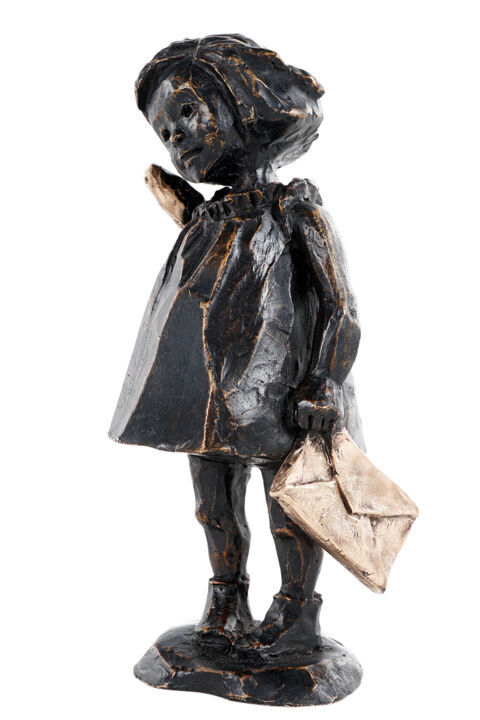



 Olimpia Gaia Martinelli
Olimpia Gaia Martinelli
